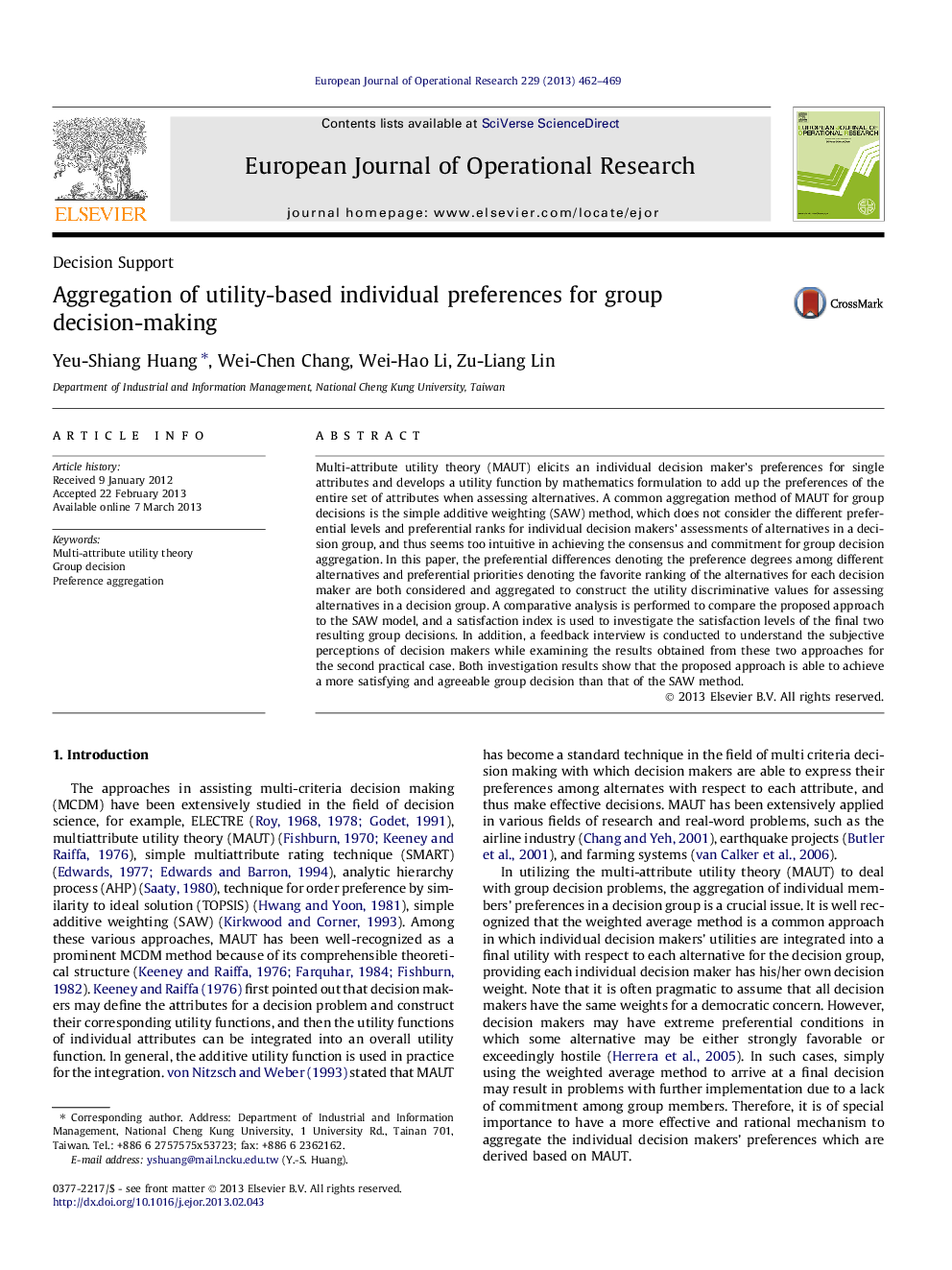| کد مقاله | کد نشریه | سال انتشار | مقاله انگلیسی | نسخه تمام متن |
|---|---|---|---|---|
| 476732 | 1446049 | 2013 | 8 صفحه PDF | دانلود رایگان |

Multi-attribute utility theory (MAUT) elicits an individual decision maker’s preferences for single attributes and develops a utility function by mathematics formulation to add up the preferences of the entire set of attributes when assessing alternatives. A common aggregation method of MAUT for group decisions is the simple additive weighting (SAW) method, which does not consider the different preferential levels and preferential ranks for individual decision makers’ assessments of alternatives in a decision group, and thus seems too intuitive in achieving the consensus and commitment for group decision aggregation. In this paper, the preferential differences denoting the preference degrees among different alternatives and preferential priorities denoting the favorite ranking of the alternatives for each decision maker are both considered and aggregated to construct the utility discriminative values for assessing alternatives in a decision group. A comparative analysis is performed to compare the proposed approach to the SAW model, and a satisfaction index is used to investigate the satisfaction levels of the final two resulting group decisions. In addition, a feedback interview is conducted to understand the subjective perceptions of decision makers while examining the results obtained from these two approaches for the second practical case. Both investigation results show that the proposed approach is able to achieve a more satisfying and agreeable group decision than that of the SAW method.
• Propose a MAUT group decision model which differs from traditional ones.
• Consider the 2nd and 3rd moments of preferences as well as alternative priorities.
• Result in a more realistic and acceptable group decision.
• Avoid the difficulty of attaining commitment encountered in traditional approaches.
Journal: European Journal of Operational Research - Volume 229, Issue 2, 1 September 2013, Pages 462–469